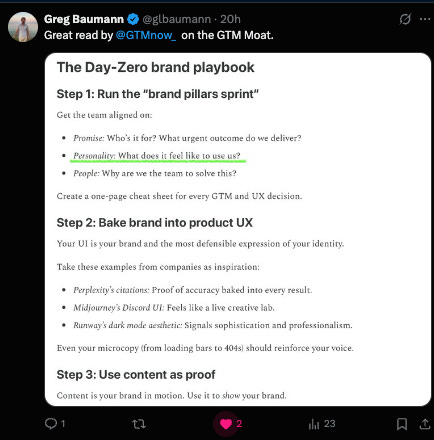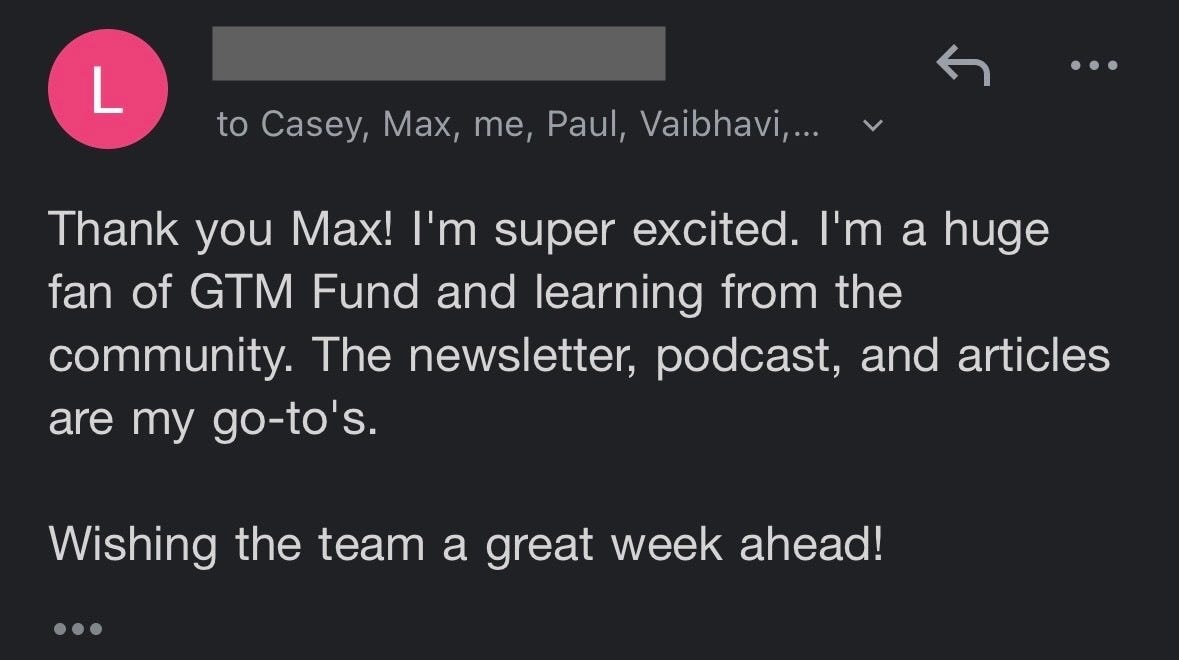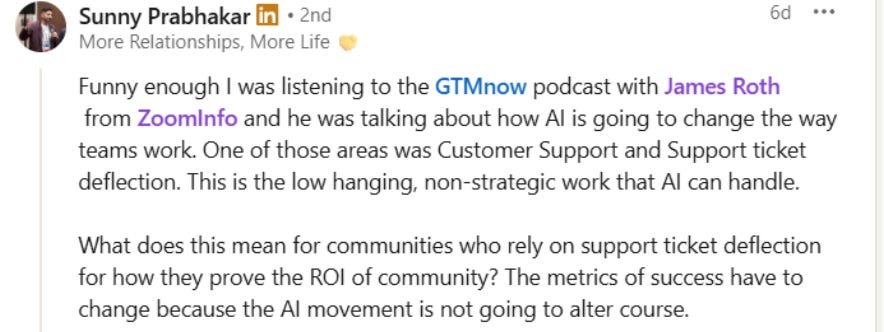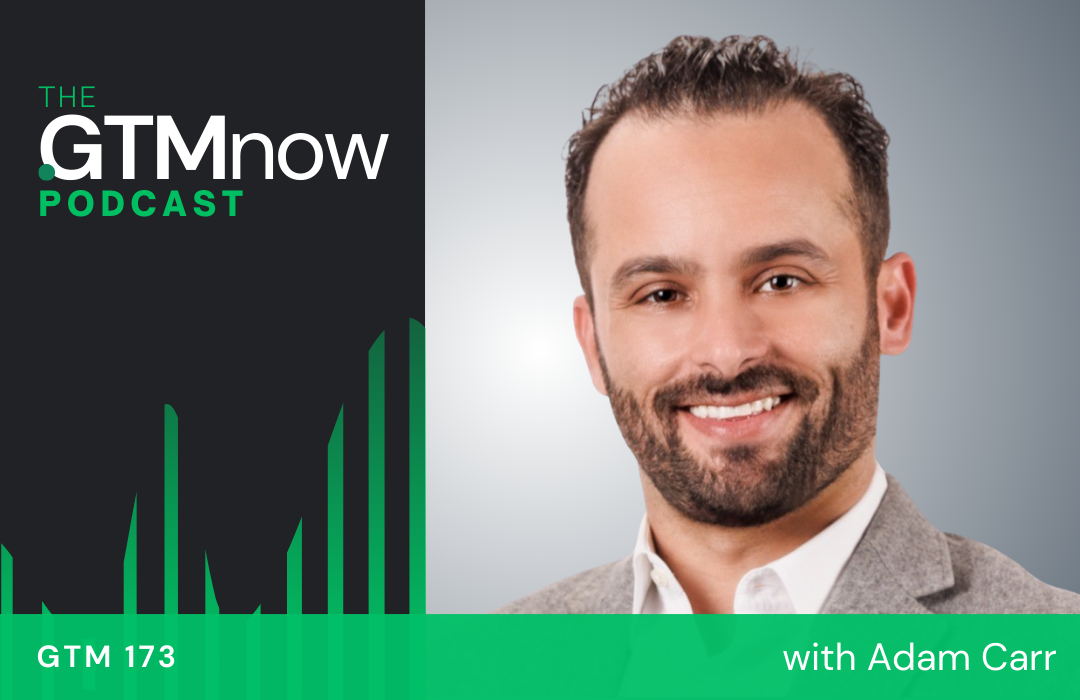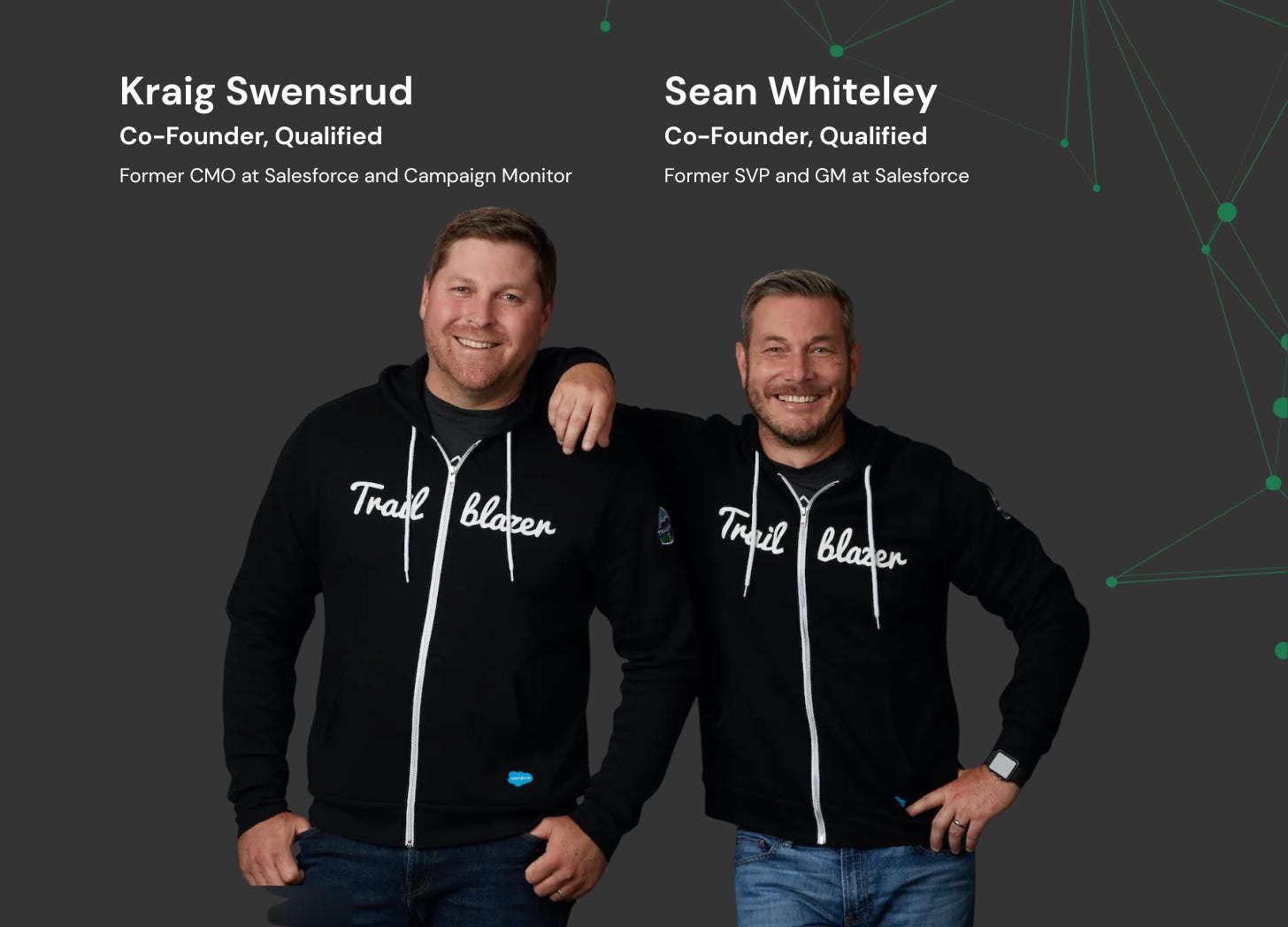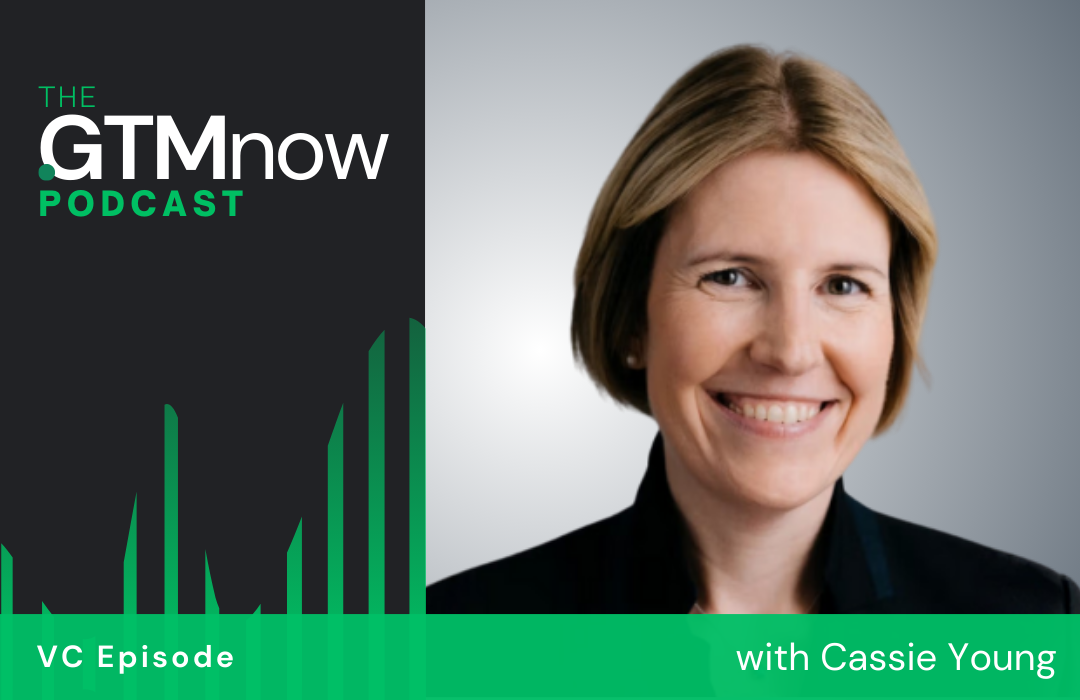Deconstructing ClickUp’s GTM: A Journey Through Three Eras of Growth
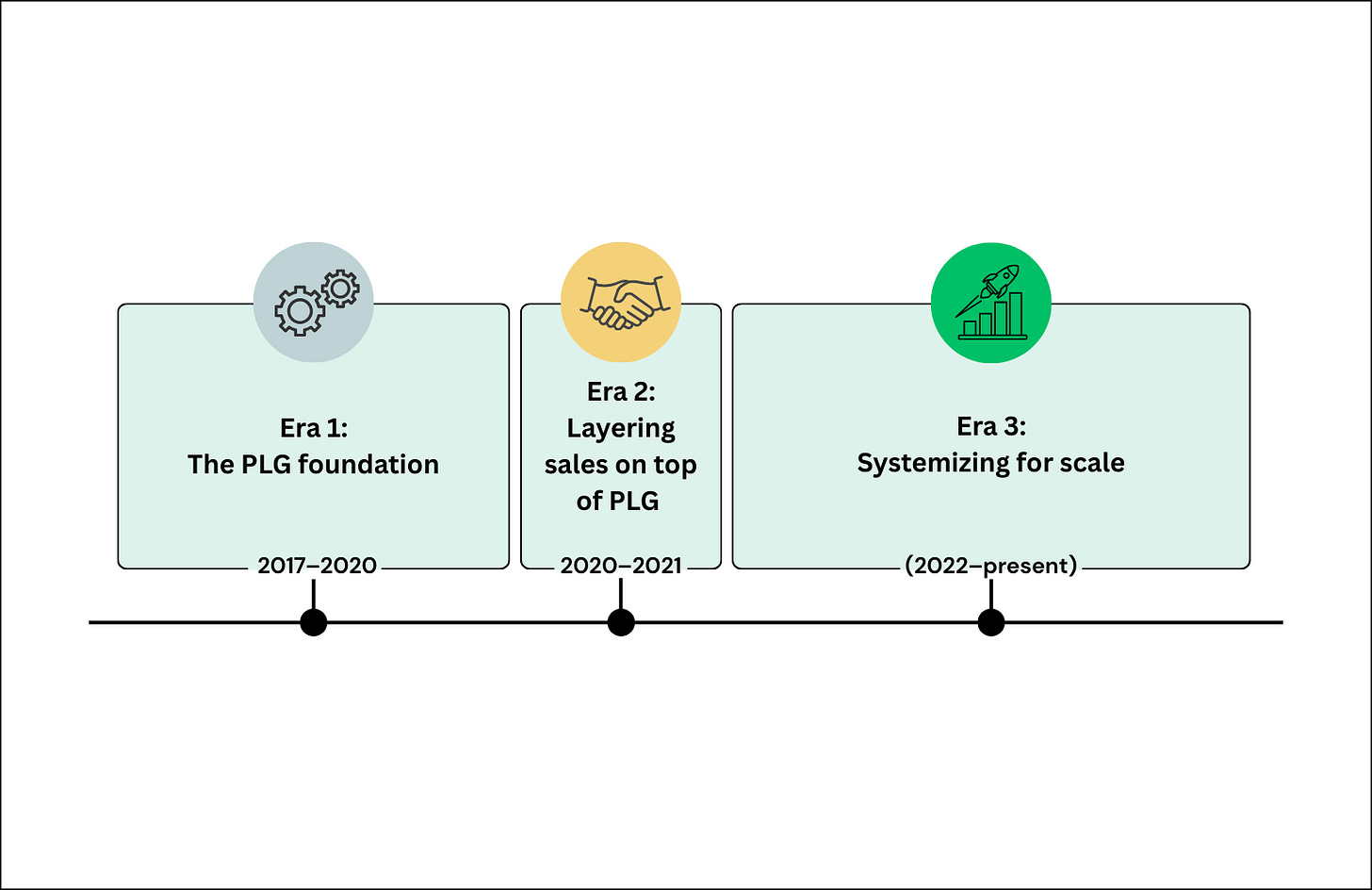
Hello and welcome to The GTMnow Newsletter – the media brand of VC firm, GTMfund. Build, scale and invest with the best minds in tech.
By deconstructing a company’s go-to-market strategy and execution, you uncover:
- The decisions behind their breakout growth.
- The mistakes that almost derailed them.
- The hidden levers that aren’t obvious from the outside.
It’s a shortcut to pattern recognition, so founders and operators don’t have to learn every lesson the hard way.
ClickUp built a company around the rhythm of pure speed. In 2017, a tiny team shipped into beta in June, out of beta by September, and landed a first paying customer in November. The product wasn’t polished so much as in motion and users could feel it. By October 2019, “ClickUp 2.0” arrived, the kind of release that tells a community: this thing is growing new rooms every week.
What followed is the story of three eras: (i) the PLG foundation, (ii) layering sales on top of it, and (iii) systemizing for scale.
Let’s deconstruct the machine.


ApolloNEXT is happening Oct. 9 in San Francisco and is shaping up to be one of the largest GTM gatherings during SF Tech Week.
This one-day, free event is your chance to step into the next generation of GTM. Learn how leading teams are using AI to unlock faster revenue growth, explore actionable strategies, and hear fresh perspectives from Anthropic, Glean and other industry pioneers. Plus, Corporate Bro will be hosting!
Network with other leaders, learn from some of the best, and get tactical AI applications to help your sales team do what they do best — sell.
Register free today, to join hundreds of others, including the GTMfund team. Hope to see you there!
ClickUp’s GTM: The Three Eras

Era 1: The PLG foundation (2017–2020)
The first era consisted of well-executed bottoms-up growth.
The goal was simple: build something people couldn’t help but share.
They operated in public with a relentless cadence. Zeb Evans (Founder & CEO) set the tone: “You should be able to see ClickUp get better every week.” They shipped over 200 features in a year, which was significantly above average at that point in time. The speed of shipping cadence built trust and trained users to expect progress.
Compounding mechanisms were the underlying growth lever:
- The Template Center wasn’t just a feature, it was a content engine and a time-to-value reducer.
- The Import Hub wasn’t just for onboarding, it was a direct attack on incumbents, disguised as a seamless transition.
- The Free Coaching Program wasn’t a sales tactic, it was a user retention strategy, catching teams at their most vulnerable moment.
Underneath it all sat a clear Hierarchy (Spaces → Folders → Lists → Tasks) that mapped to how work actually happens, making it easy for usage to spread from one person to an entire department.
The content engine ran at the same tempo. In 2020 alone, 227 blog posts shipped, comparison pages intercepted buyers at the moment of choice, and how-tos plus templates compounded organic traffic. Support moved just as fast: 396,904 tickets resolved in 2020 alone.
During this foundational PLG era, ClickUp demonstrated that the most effective “marketing” is a set of mechanisms designed to reduce time-to-value and make product progress unmistakable.
Era 2: Layering sales on top of PLG (2020–2021)
The product machine was humming. But then, a new signal emerged: hand-raisers.
Admins from large domains, already using the product, were asking for help. They needed support to roll out ClickUp at scale. These weren’t small teams, the deals were often 10x the LTV of self-serve users.
An important part to note here is that they layered on sales not a a strategic choice, but a response to demand. This approach is consistently echoed by companies that successfully went upmarket, including Vanta. You can hear their CRO, Stevie Case, share how demand dictated Vanta’s upmarket expansion in this conversation.
ClickUp’s first sales hire wasn’t to outbound upmarket, they were an inbound rep to meet demand that was already bubbling up inside the product.
This led to the true innovation of this era: Product-Led Sales (PLS). They fused product and sales, where usage events became triggers.
- A sudden spike in seat count? That’s a PQL.
- A new admin created? That’s a PQL.
- SSO/API turned on? That’s a PQL.
The machine was now fueled by both self-serve adoption and data-driven outreach. More on how Clickup blends PLG and sales-assist here.
The sales layer more than worked, it exploded.
Revenue grew ~9x in 2020. The user base doubled in the back half of the year. The company went from a $35M Series A to raising $100M and then $400M a year later.
The machine was firing on all cylinders. But that kind of speed can also be a recipe for chaos.
Growth exposed seams:
- Internal friction. The team jumped from ~200 to 500+ people. Processes couldn’t keep up. The chaos of a startup wasn’t a sustainable model for a scale-up.
- The “eight-layer cake.” Customers felt overwhelmed. An SDR, an AE, a CSM—all overlapping, all reaching out. The seamless, product-led experience was getting muddled.
Era 3: Systemizing for scale (2022–present)
After two years of a rocket ride, the mission changed. The operating question shifted from “What worked?” to “What’s incremental?”
Things shifted from growth at all costs to allocation of dollars, touches and time.
Budgets were re-cut, the media mix was optimized, and first-party data became the most valuable asset. The result? CAC fell by ~3X.
They rebuilt the entire GTM as a single revenue system, organized across three clear segments:
- Self-serve SMB.
- Sales-assisted Commercial.
- Enterprise.
Each had a clear goal, but they all worked under one plan.
The final evolution was orchestration. They launched Project Constellation, a systems-first approach to GTM. It used product and account signals to prioritize actions across sales, success, and marketing. It was a single brain, a unified nervous system.
The results speak for themselves: ARR from ~$85M to $250M+. CAC down 50-66%.
Frameworks, mental models and playbooks
These are some of the frameworks, mental models and playbooks that ClickUp used throughout the three eras of growth.
Mental models (how to think)
Input KPI > Output KPI
Make shipping every week the behavior that drives growth (instead of chasing lagging outputs).
You can implement this by starting a Friday Ship Log – every team posts one shippable improvement.
Incrementality > Attribution
Fund what moves outcomes versus a control, not what a platform “credits.”
Use this when ad spend is high, CAC is fuzzy, channels claim the same wins. To implement, run a 2-week holdout on your biggest channel; reallocate to the highest incremental lift.
Signals > Opinions
Let product/account events call the play (not gut feel).
To implement this, define 4 starter signals (seat spike, SSO on, large import, usage drop) and route actions.
Mechanisms > Moments
Compounding programs (templates, imports, coaching, weekly releases) beat one-off launches.
To implement, pick one mechanism to build this month (e.g., Template Library v1).
Complexity Tax Index
A check against “too many touches.” Cap owners per account.
To implement, cap to ≤3 active owners on top accounts, and suppress conflicting touches.
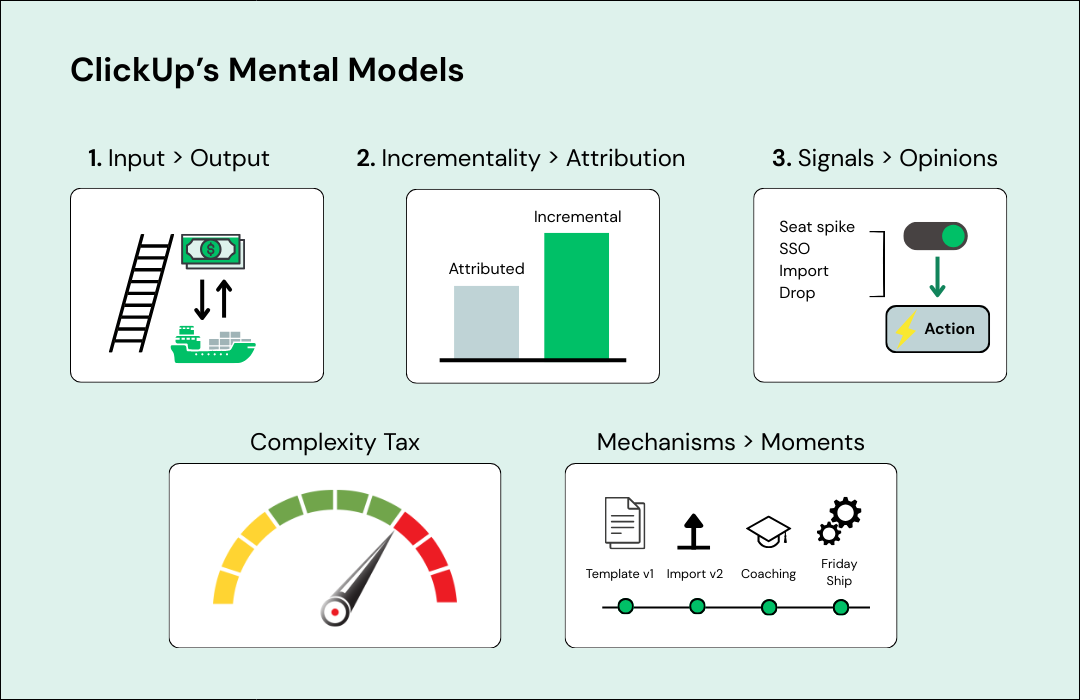
Frameworks (how to structure)
Three-Lane Funnel (Creation / Harvesting / Retention)
One GTM system split into three lanes with distinct goals and owners.
To implement, tag every initiative to a lane. Then, pause anything untagged.
Payback by Segment
CAC payback thresholds by SMB/Commercial/Enterprise.
To implement, set thresholds, such as SMB <9 mo, Commercial <12 mo, ENT <18 mo; pause programs above threshold.
Guardrails + Primary
One outcome per lane, plus 2–3 guardrails that prevent dumb wins.
To implement, publish a traffic-light dashboard: Primary + Guardrails per lane.
Playbooks (how to execute)
Signals → Playbooks → SLAs (Project Constellation)
Turn signals into the next best action with timeboxes and controls.
Use when follow-ups are slow or opportunities or risks slip through cracks.
To implement, activate 4 rules with SLAs (e.g., seat spike → AE in 48h; usage drop → CSM in 72h) + holdouts.
PQL-First Territory
Prioritize accounts by product-qualified score, not firmographics.
To implement, ship a simple PQL score (weights for seats, admin, SSO, imports, collab events) and route ≥ 7.
Weekly Win Factory
Every lane ships one improvement each week (cadence across GTM, not just product).
To implement, commit 1 ship/week/lane (template, sequence, activation play) and review on Fridays.
Incrementality Test Pack
A repeatable way to prove which channels/plays truly add revenue.
To implement, pick one channel, define holdout and success metric, and move 20–30% budget to winners.
AI Adoption Loop (Replace / Reinforce / Reimagine)
A simple sequence to add AI where it improves payback.
To implement, choose 3 workflows to (1) replace manual steps, (2) reinforce existing flows, (3) reimagine an experience.
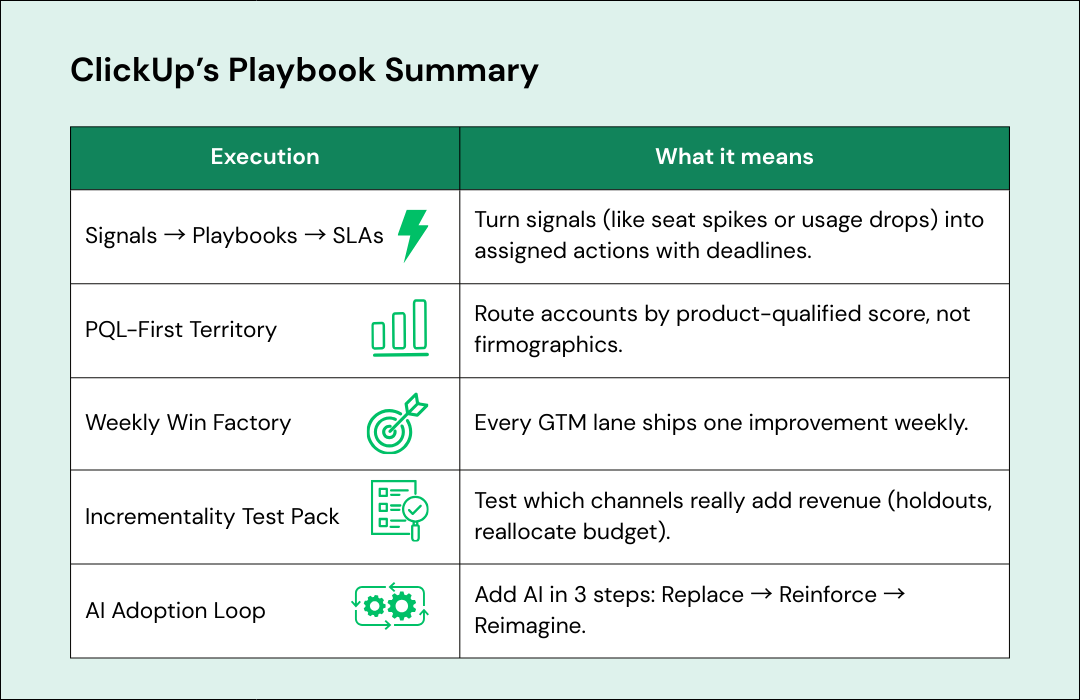
Tag @GTMnow so we can see your takeaways and help amplify them.
More for your eardrums
Jenny He is the Founder & General Partner at Position Ventures, an early-stage fund backing startups with communications that actually move the needle. Before investing, she ran comms at Square and has since helped hundreds of founders earn coverage in outlets like TechCrunch and Forbes.
Her take: PR isn’t just about getting your name in the press. It’s about setting the narrative early so you build credibility and momentum from day one. She shows founders and operators how to:
- Get the order right — positioning → storytelling → PR
- Steer clear of the launch mistakes that sink trust
- Treat PR as a growth engine, not a side project
Listen on Apple, Spotify, YouTube or wherever you get your podcasts by searching “The GTMnow Podcast.”
Startups to watch
UserEvidence acquired Zealot and raised $7M, bringing its total funding to $21M. This supports product development and powering a full-funnel customer advocacy engine. With advocacy workflows, AI reference matchmaking, and burnout protection baked in, GTM teams can now treat customer proof as a reliable growth lever instead of a last-minute scramble.
More for your eyeballs
Workflows are the new databases. In the AI era, the real bottleneck isn’t model performance, it’s execution. Durable workflow engines are emerging as the invisible backbone of AI apps, just like relational databases underpinned SaaS.
The GTM Engineer role didn’t exist 18 months ago. Now OpenAI, Ramp, and Webflow are racing to hire them. Maven and Clay teamed up to showcase what the top 1% GTM Engineers are building.
Linear completed a tender offer as part of its Series C, giving current and former employees liquidity at a $1.25B valuation. It’s part of “Linear Infinity,” their approach to long-term ownership and retention.
Hottest GTM jobs of the week
- Vice President, Sales at Amper (Remote – USA)
- SDR, Specialty Sales at Vanta (Hybrid – New York)
- Regional Sales Director – Central at Atlan (Remote – USA)
- Mid-Market Account Executive at Noibu (Hybrid – Ottawa, ON)
- Mid-Market Customer Success Manager at Writer (Hybrid – London, UK)
See more top GTM jobs on the GTMfund Job Board.
If you’re looking to scale your sales and marketing teams with top talent, we couldn’t recommend our partner Pursuit more. We work closely together to be able to provide the top go-to-market talent for companies on a non-retainer basis.
GTM Industry Events
Upcoming events you won’t want to miss:
- INBOUND 2025: September 3-5, 2025 (San Francisco, CA)
- GTMfund Dinner (private registration): September 10, 2025 (San Francisco, CA)
- Pavilion GTM Summit: September 23-25, 2025 (Washington, DC)
- National Mall Walk with GTMfund: September 25, 2025 (Washington, DC)
- Dreamforce: October 14-16, 2025 (San Francisco, CA)
- GTMfund Dinner (private registration): October 22, 2025 (Austin, TX)
- GTMfund Dinner (private registration): November 18, 2025 (Toronto, ON)
- GTMfund Dinner (private registration): November 19, 2025 (New York, NY)
- GTM x Founder Event (private registration): November 20, 2025 (New York, NY) – if you’re an AI-focused founder in NYC, hit reply to get the details
GTMnow community love
Some GTMnow community (founder, operator, investor) love to close it out – we appreciate you.
